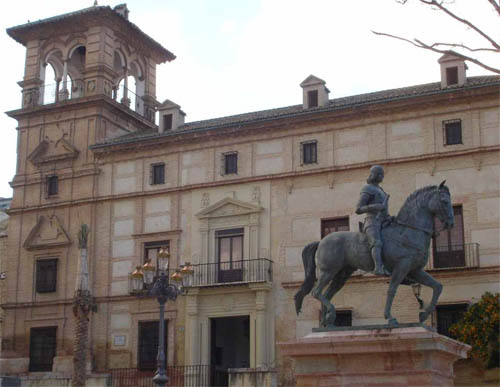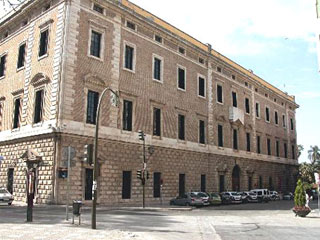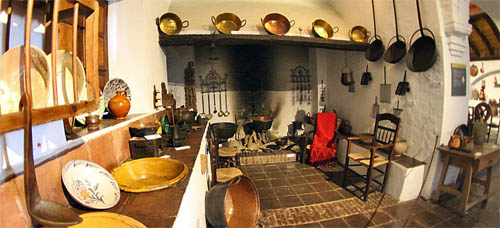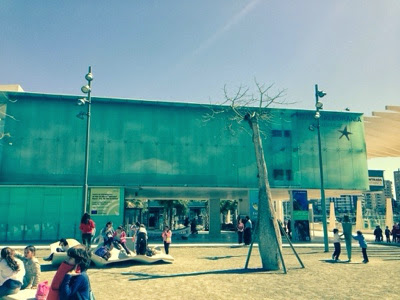Raisin Museum in Almachar
The Raisin Museum is situated in Almáchar and the exhibitions span across the old two story building.
It has a collection of tools which are used in the harvesting of grapes (some of which are still used today) from the 19th and the 20th century.
Antequera Bullfighting Museum
The bullfighting museum in Antequera is located on the upper level of the Antequera Bullring.
There is a vast display of photos, press clippings and other items to do with the world of bullfighting in the museum.
The bullring was opened in 1848, however this structure was rebuilt in 1983 and this changed the whole appearance of the original 19th century structure.
Antequera Municipal Museum
The municipal museum is housed in the Palacio de Najera, which is a building from the 18th century.
There some fine pieces of fine art on display at the museum and there is also some of which date back to Roman and prehistoric times.
The museum first opened to the public in 1972; however the doors closed briefly from June 2009 and were reopened again in January 2011.
Wine Museum in Competa
The wine museum in Competa is housed inside a traditionally built bar and restaurant.
The bar offers a wide variety of traditional tapas.
Competa is located around 49 kilometres from the city of Malaga.
Archeological Museum in Malaga
In 2010 the Provincial Archaeological Museum moved from its original location of within the Alcazaba Fortress to be together with the Fine Arts Museum to create what is now known as the ‘Museo de Malaga’ (Malaga Museum).
The location of these two museums is now near the Town Hall building and Port area of the city.
The Malaga Museum is divided into two different sections, with over 2000 pieces in the Fine Arts collection and over 15000 in the Archaeological collection.
Cathedral Museum in Malaga
The Malaga Cathedral Museum is located within the same structure as the Malaga Cathedral. Inside the Museum there are lots of paintings, manuscripts and sculptures.
The Cathedral started to be built in 1528 and wasn’t completed until 1782.
Fine Art Museum in Malaga
In 2010 the Fine Arts Museum joined together with the Provincial Archaeological museum to create what is now known as the ‘Museo de Malaga’ (Malaga Museum).
The building is located near the Town Hall and Port area of the city.
The Malaga Museum is divided into two different sections, with over 2,000 pieces in the Fine Arts collection and over 15,000 in the Archaeological collection.
Pablo Ruiz Picasso Foundation
The Pablo Ruiz Foundation Headquarters is located in the same building as where the artist was born in 1881.
The aim of the foundation is the promotion and distribution of the works of art by Picasso; it was created by the Malaga Town Hall in 1988.
The Foundation has a total of over 4000 pieces of art by over 200 different artists in its collection.
Popular Arts& Customs Museum
The Museum of Popular Arts is located in the pasillo de Santa Isabel which runs alongside the Guadalmedina river in the heart of Malaga.
The museum building was built in the 17th century and the museum itself was opened in 1976.
The pieces of art on display are spread out over two floors and nineteen different rooms.
Sea Aquarium Museum
The Sea Aquarium Museum or ‘Aula del Mar’ (Sea Classroom) as it is known in Spanish first opened to the public in 1990.
The museum is located near the port area of Malaga and some of the exhitbitions on display include recreations of maritime life with models and tools.
Bonsai Tree Museum in Marbella
Another place worth a visit in the Marbella area is the Bonsai Museum, located in Parque de la Represa.
Highlights of museum include seeing an example of the Chinese ‘Almez’ which originally belonged to the same Chinese family for five generations.
The museum in total has over 300 bonsais from 40 different kinds of species.
Contemporary Engraving and Sketching Museum in Marbella
The contemporary sketching and engraving museum in Marbella first opened in 1992.
The museum is located in an old watchtower building. It is thought to be the only one of its kind in Spain and of only few which exist in the world.
Some of the artists which have pieces of art on display at the museum include: Picasso, Miró, Tapies, Chillida amongst other famous painters.
Carromato de Max, The Miniature Museum in Mijas
The Carromato de Max museum in Mijas Pueblo is thought to be the only museum in the world dedicated to miniatures. The museum was first opened to the public by Professor Max in 1972.
Some of the items on display include a naval battle painted on top of a pinhead, or Leonardo Da Vinci’s ‘Last Supper’ painted on a grain of rice.
Prehistoric and Archeological Museum. Nerja Caves
The Prehistoric and Archaeological is located just on the outskirts of the caves in Nerja.
The caves in Nerja are considered to be some the best in Europe.
It is possible to explore the caverns and chambers that which aren’t open to the public with specialist caving groups.
Ethnographic Museum in Riogordo
The Ethnographic Museum is situated in Riogordo and offers a display of utensils which were used in the area along with what the rural life was like for the town’s ascendants.
Some of the items on display include an old olive press and machinery which was used to produce the local wine.
Bandit Museum of Ronda
Bandits used to operate in the area of Ronda and the surrounding mountains in the 19th century.
The bandits or ‘bandeleros’ would work in groups of between two and three to ‘small armies’ of around fifty men.
One of the most famous bandits was called Jose Maria Hinojosa Cabacho or ‘El Tempranillo’ (the early one) as known because he joined the bandeleros at the age of 13.

















